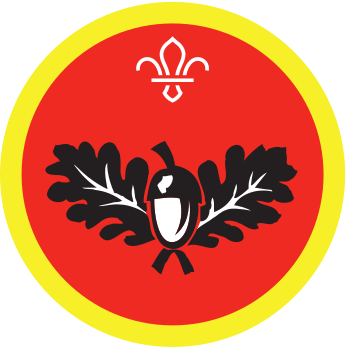Visiting nature
You’ll need
- A4 paper
- Pens or pencils
- Camera or phone (optional)
Before you begin
- This activity can be completed independently of regular section meetings.
- Think about an outside natural area that you visit often. Places such as parks, river areas, gardens, campsites, nature reserves, countryside footpaths and even school fields.
- Decide on a natural area to visit.
To earn the Cubs Naturalist Activity Badge, this place must be visited at least four times over three months.
- Make sure an adult, parent or guardian agrees on these visits. Does an adult need to be part of the visit itself or can this be done alone? Be sure to agree on this, so everyone involved understands what the requirements are and why this is being done.
If going to river areas or areas of water, make sure you follow POR rule 9.48 – Activities near the water.
- Decide on how to document these visits. You could write, draw or take photos with a camera or phone.
Go exploring
- Before visiting the chosen natural area, gather together the things you need to record what you find.
- Dress for the weather at the time of the visit and inform an adult, parent or guardian of the visit.
- During the visit to the natural area, it’s good to consider:
-
- What does the ground look like and feel to walk on? Is it hard, soft, crunchy, slippery?
- How do the trees look? Do you think they are old trees? Why? What do the leaves look like?
- Can any wildlife be seen or heard? Look up high and down low.
- What is the weather like?
- What else can be seen or heard? Traffic? People enjoying themselves?
- Remember to record the things around the natural area by writing, drawing or taking photos of what you see.
- Before the next visit, look back on your records from the visit before. During your next visit, compare how the natural area has changed. Keep a record of this.
- Repeat these visits at least four times over three months.
- After all the visits have been completed, pull together all the notes, drawings and photos and tell your section about where you explored and what you discovered.
Reflection
As well as the plants and wildlife changing, did you notice any other changes, such as litter, buildings, or the amount of people also visiting? How did these things affect the visiting place?
Safety
All activities must be safely managed. You must complete a thorough risk assessment and take appropriate steps to reduce risk. Use the safety checklist to help you plan and risk assess your activity. Always get approval for the activity, and have suitable supervision and an InTouch process.
- Outdoor activities
You must have permission to use the location. Always check the weather forecast, and inform parents and carers of any change in venue.
- Animals and insects
Be aware of the risks before interacting with animals. Be aware of anyone with allergies, and make alternative arrangements for them.
- Water games and activities
Be careful when doing activities with, in, or near water. Check surfaces and reduce the risk of slipping where possible. Make sure you have appropriate supervision for this activity.
When deciding on a natural place to visit, remember: it doesn’t have to be far from home. Consider using a garden or local outdoor area. If you’d prefer not to write down the changes in the area, why not take photos or sketch them?
All Scout activities should be inclusive and accessible.
After noticing the changes in the natural area, is there anything that could be done to help this area? Could you pick up the litter, fix broken things, support the wildlife by adding hedgehog homes or bug hotels? How could you help?
